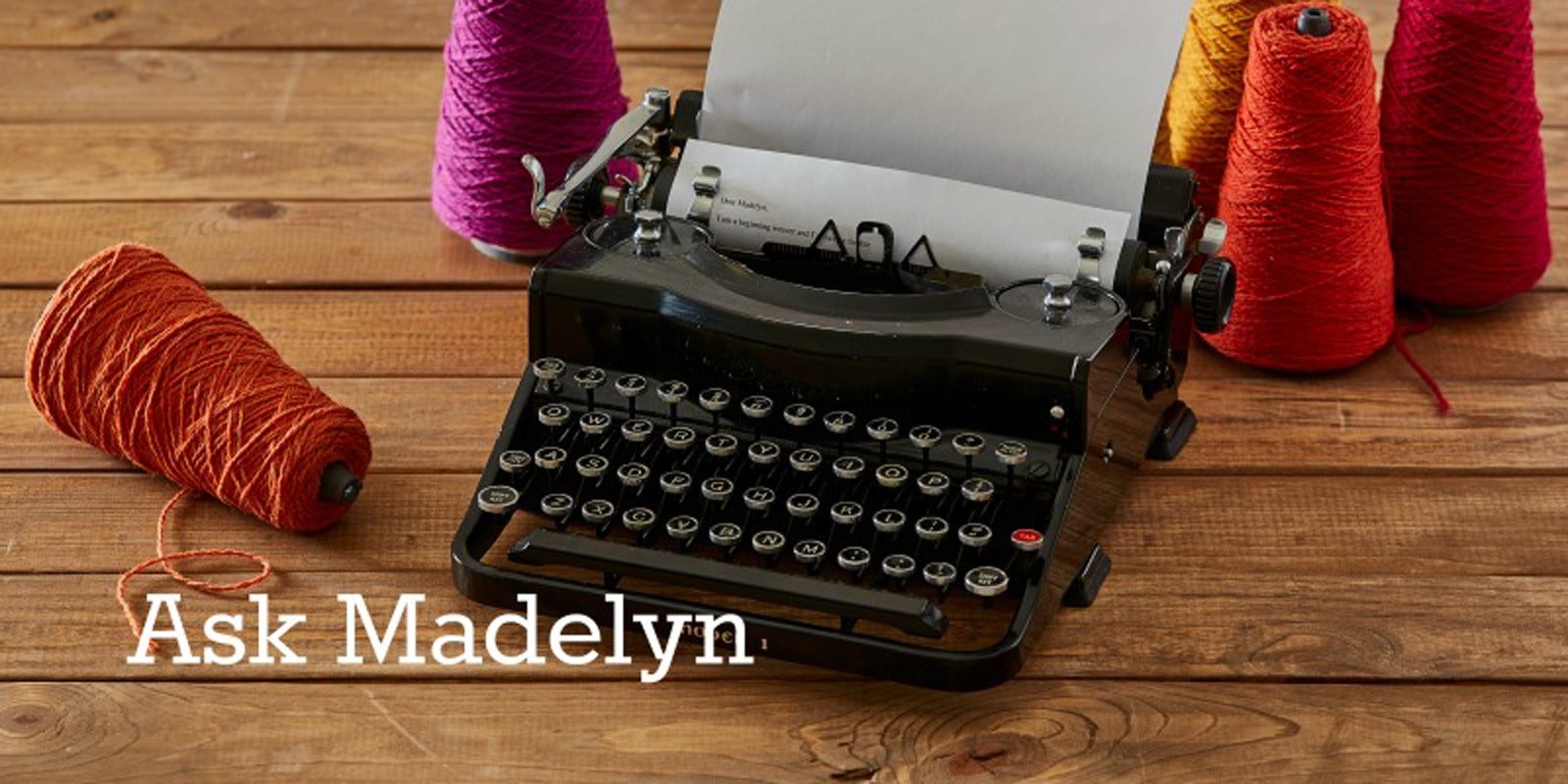Hi Madelyn, I live in New Zealand and have an 8-shaft dobby loom. I have asked many weavers about floating selvedges and get lots of different answers. Do you wind it on the back beam with the warp and weight it or do you hang it over the back with a weight on it? Looking forward to hearing your answer as this is very confusing. Kind regards, Raeleen
Hi Raeleen!
As with many aspects of weaving, there is no one “right” answer to your question.
First of all, it is only necessary to use a floating selvedge with weave structures that cause two or more warp threads on the edges to be down or up for two or more picks in a row. This usually happens with twills and with weaves that use supplementary pattern-weft floats.
The floating selvedge is a weighted thread on each side of the warp that does not go through a heddle. It therefore sits above the rest of the warp threads (on a jack loom and in the middle of the shed on a countermarch or counterbalance loom), and the weft always goes around it (either by going in over it on one side and out under it on the other side or vice versa). I choose always going in over it and out under it because it sits somewhat low in the shed, not really in the middle (with jack looms). It is therefore easy to throw the shuttle into the shed without looking, and I can lift the floating selvedge with my other hand and catch the shuttle as it exits.
Whether to wind it on the warp beam or to add it after the warp is beamed is a personal preference. I very much prefer winding it on the warp beam and simply hanging a 3-inch S-hook on it (it slides under the warp beam and I never think about it again). If you add the floating selvedge as a separate thread, you have to attach a weight to it with a lark’s head or other method and then continually move the weight as it comes up to the back beam during weaving. The method of using a film canister filled with coins (and now prescription bottles after the disappearance of film canisters) would drive me nuts. The only advantage to adding the floating selvedges as separate threads would be that if the floating selvedge breaks, you can simply pull up the thread from the floor, pin it to the cloth, and continue weaving. I think it’s better not to break any floating selvedges.
—Madelyn
If you have a weaving question please email Madelyn!

